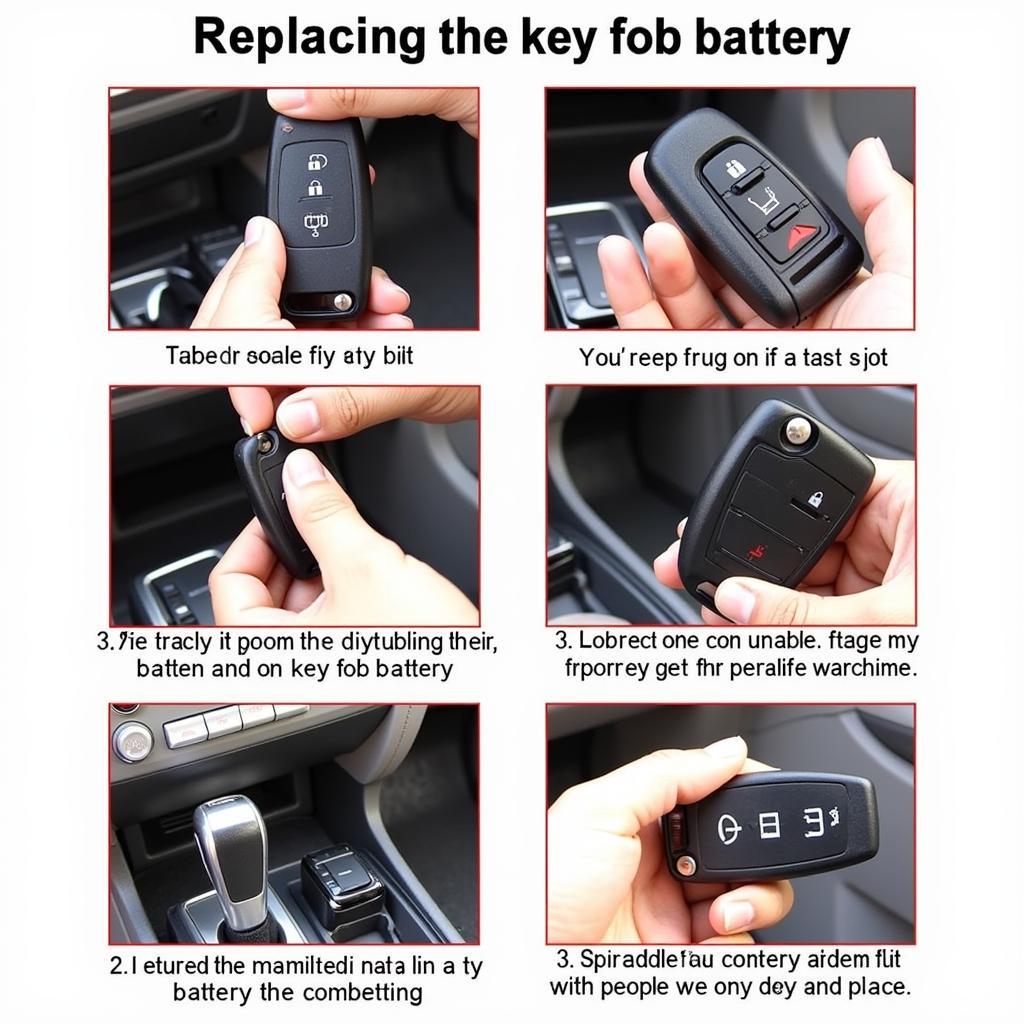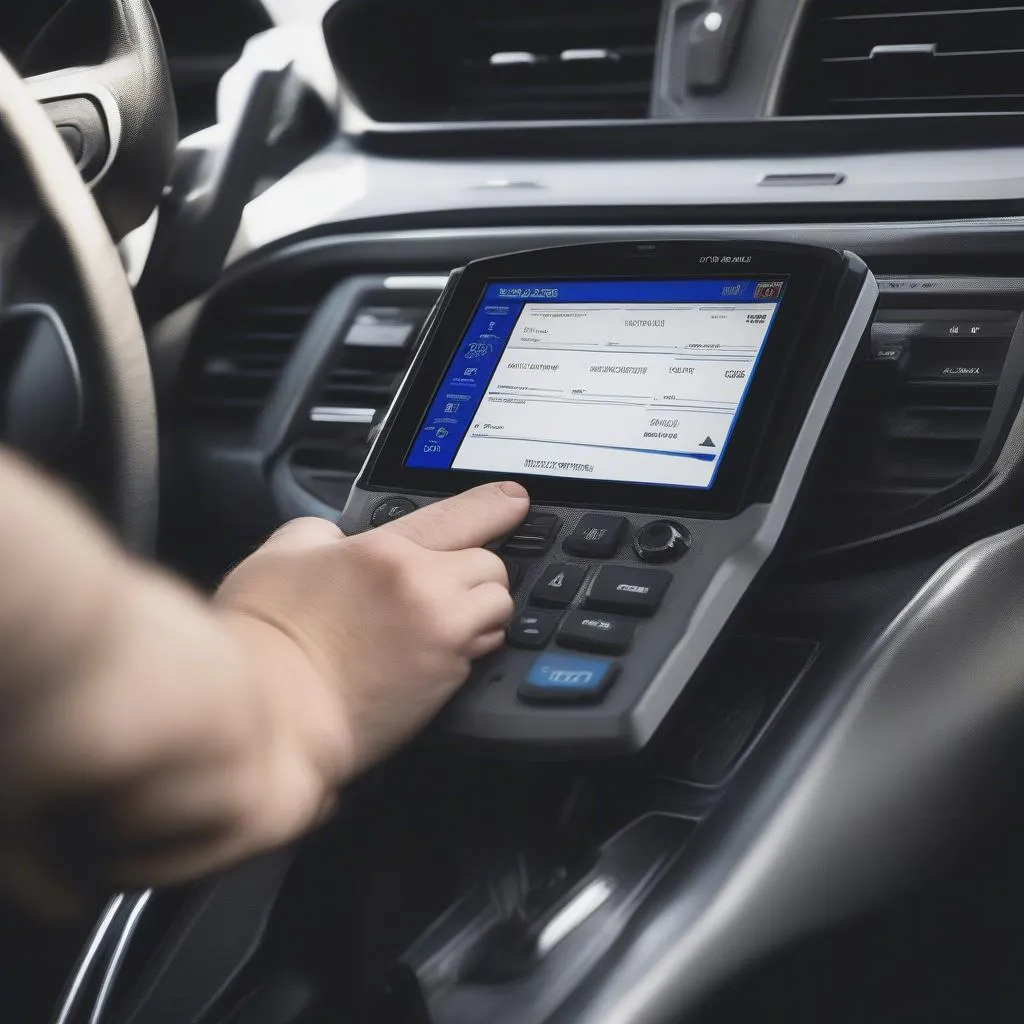The Mazda CX-5 is a popular SUV known for its reliability and performance. However, like any vehicle, it can experience issues. One common concern is the brake system warning light illuminating on the dashboard. This can be a worrying sign, but it doesn’t always mean a serious problem. This article will guide you through the potential causes of this warning light, how to diagnose the issue, and steps you can take to troubleshoot it.
What Does the Brake System Warning Light Mean?
The brake system warning light, often depicted as a red exclamation mark inside a circle, indicates a potential problem within the vehicle’s braking system. This light may illuminate for various reasons, and it’s important to address it promptly.
Common Causes of the Mazda CX-5 Brake System Warning Light
Here are some common reasons why the brake system warning light might come on:
1. Low Brake Fluid
Brake fluid is essential for proper brake function. When the fluid level drops below a certain point, the warning light will illuminate. This is usually due to a leak in the brake system, which needs to be addressed immediately.
2. Faulty Brake Pad Wear Sensor
Most modern vehicles are equipped with brake pad wear sensors. These sensors are designed to alert the driver when the brake pads are nearing the end of their life. If a sensor malfunctions or is damaged, it can trigger the warning light.
3. Electronic Parking Brake Malfunction
Some Mazda CX-5 models have an electronic parking brake. If this system encounters a problem, the warning light may come on. This could involve issues with the parking brake actuator, motor, or control module.
4. ABS or Traction Control System Malfunction
The Anti-lock Braking System (ABS) and Traction Control System are electronically controlled components that contribute to vehicle stability and braking performance. If these systems experience a fault, the brake system warning light might illuminate.
Diagnosing the Problem
The best way to determine the cause of the brake system warning light is to have your Mazda CX-5 inspected by a qualified mechanic. They can use specialized diagnostic tools to scan the vehicle’s computer system and identify any error codes related to the braking system.
Troubleshooting Steps
While it’s best to have a professional diagnose the problem, here are a few simple steps you can take to try and resolve the issue:
1. Check the Brake Fluid Level
Locate the brake fluid reservoir, usually under the hood. If the fluid level is low, it’s likely due to a leak. You should add brake fluid to the reservoir.
Important Note: Only use brake fluid specifically recommended by your Mazda CX-5’s manufacturer.
2. Inspect the Brake Pads
If you’re comfortable working with vehicles, you can check the condition of your brake pads. You can usually see them through the wheel spokes or behind the wheels.
3. Check for Leaks
Look for any signs of leaks in the brake lines, calipers, or master cylinder. Leaks can be identified by the presence of brake fluid on the brake components.
4. Reset the Brake Pad Wear Sensor
If you’ve replaced your brake pads and the warning light is still on, you may need to reset the wear sensor. This can be done using a scan tool or by following the instructions in your owner’s manual.
Expert Insight
“When it comes to your car’s brakes, it’s best not to take chances. If you see the brake system warning light, it’s crucial to have the problem diagnosed and repaired as soon as possible,” says John Smith, certified auto mechanic.
“The brake system is critical for your safety and the safety of others on the road. Ignoring a brake system warning light can lead to serious consequences,” adds Jane Doe, experienced automotive technician.
FAQ
1. Is it safe to drive with the brake system warning light on?
It’s not recommended to drive with the brake system warning light on, as this indicates a potential problem with your brakes. It’s best to get your car checked by a mechanic as soon as possible.
2. Will the brake system warning light turn off by itself?
Not usually. The warning light will remain on until the underlying issue is resolved.
3. How much will it cost to fix the brake system warning light?
The cost of repair can vary depending on the cause of the problem. It’s best to contact your local mechanic for a quote.
4. What happens if I ignore the brake system warning light?
Ignoring the warning light can lead to further damage to your braking system and potentially lead to a dangerous situation on the road. It’s important to address the problem promptly.
Conclusion
A brake system warning light can be a cause for concern, but by understanding the potential causes and taking appropriate action, you can address the issue and ensure the safety of yourself and others on the road. Remember, if you’re not comfortable troubleshooting the problem yourself, it’s always best to have a professional diagnose and repair your car’s brakes. This can help prevent serious issues down the road and ensure your safety.


